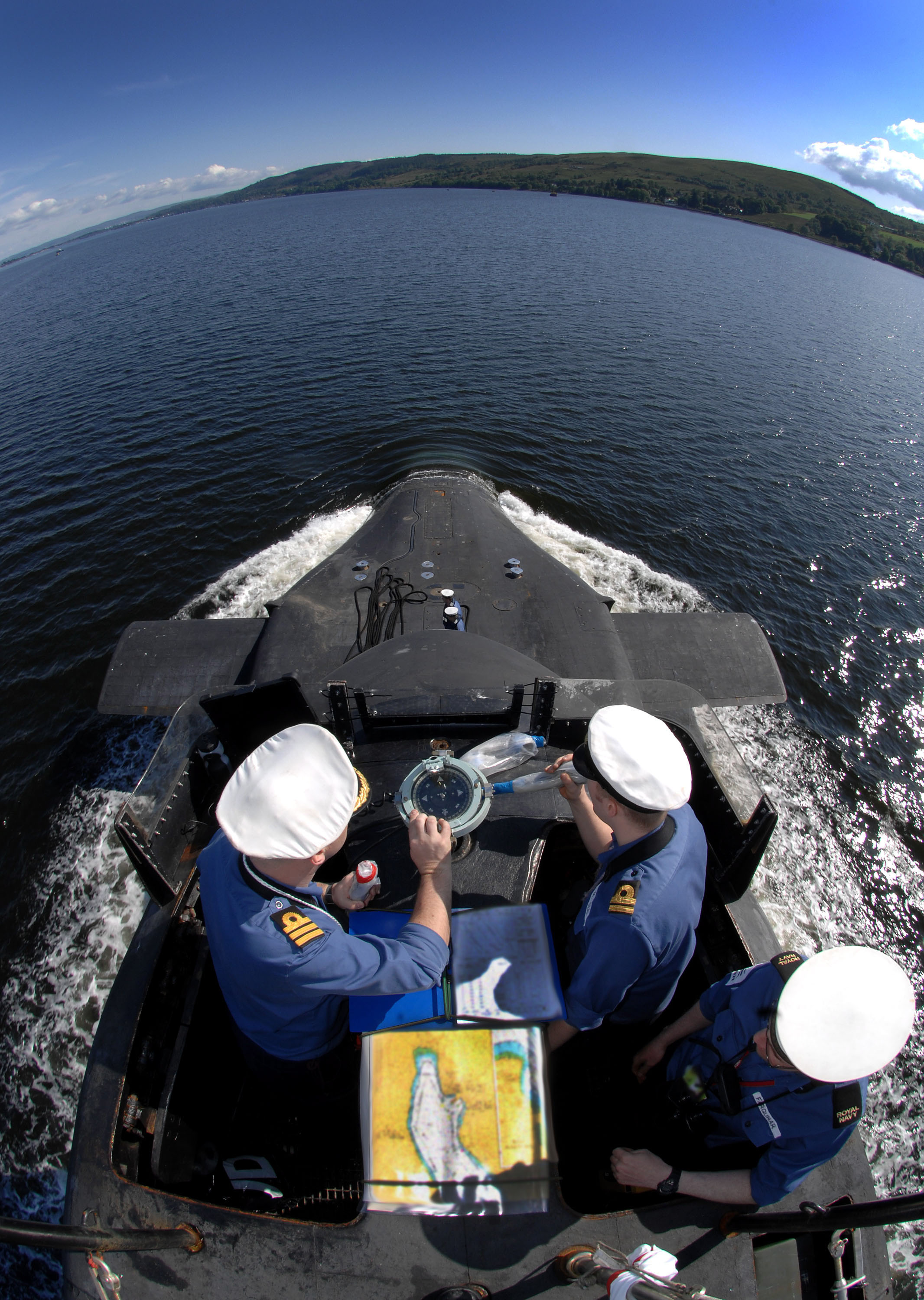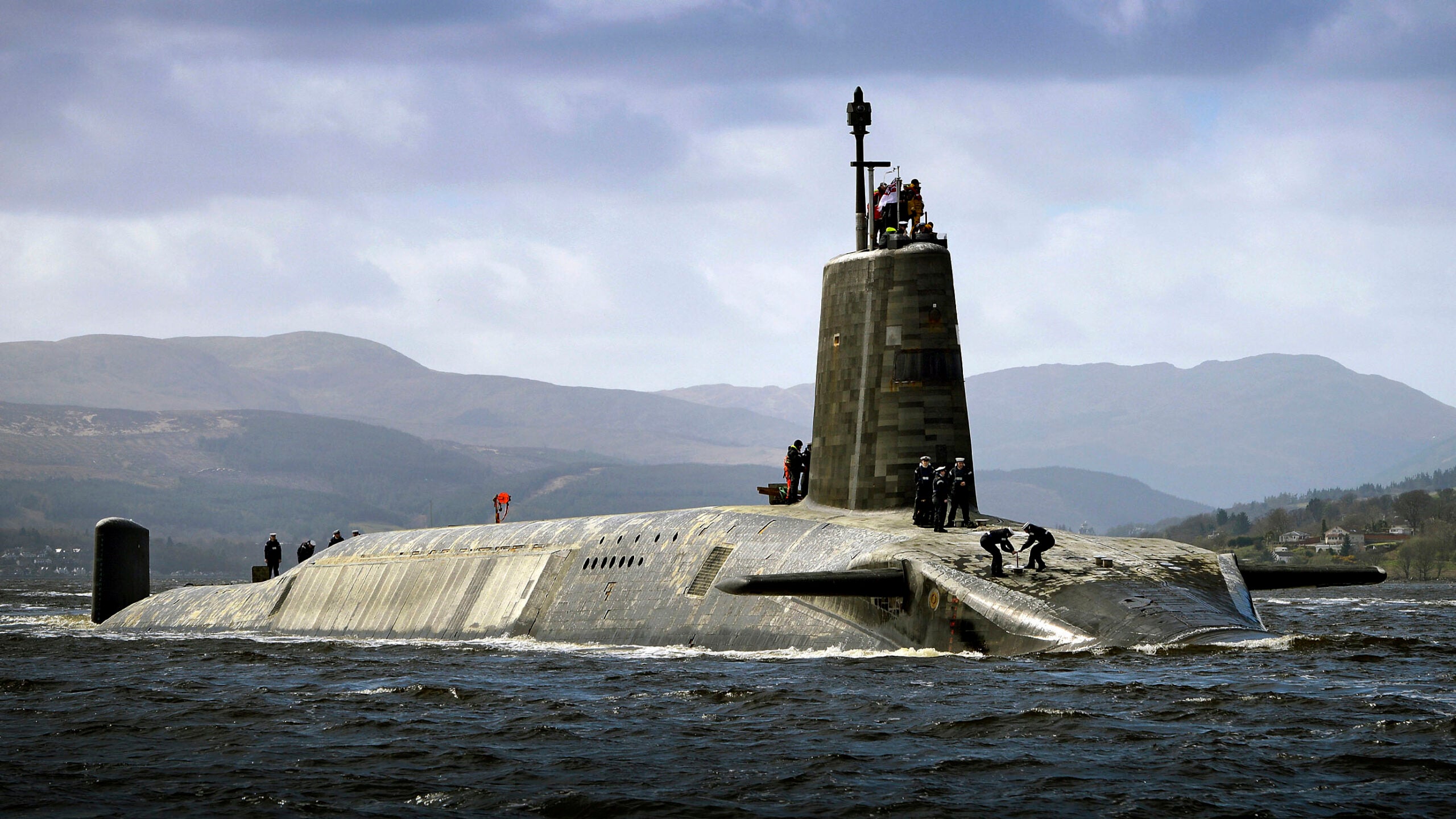The United Kingdom has unveiled a revised strategic posture, which includes potentially using its own submarine-based nuclear deterrent in response to not only threats presented by weapons of mass destruction but also by other threats from “emerging technologies.” The shift was announced today by Prime Minister Boris Johnson, who also confirmed plans to increase the upper limit on U.K. warhead numbers, as The War Zone has previously discussed.
The U.K.’s Integrated Review of Security, Defense, Development and Foreign Policy, subtitled Global Britain in a Competitive Age, was published today as the first of a two-part defense review covering the years through 2025. As well as the fact that the country’s stockpile of nuclear weapons is set to increase for the first time since the Cold War, the report provides insight into intriguing changes to the country’s nuclear posture.

The review states that a previous ambition to reduce the overall nuclear warhead stockpile ceiling from not more than 225 to not more than 180 by the mid-2020s “is no longer possible” due to changes in the security environment, “including the developing range of technological and doctrinal threats.”
As a result, the U.K. will, in the future, have an overall nuclear weapons stockpile of no more than 260 warheads to arm the Trident missiles used aboard its four nuclear-powered ballistic missile submarines (SSBNs), one of which is always on patrol. On the other hand, and contradictorily, the U.K. remains officially committed to Treaty on the Non-Proliferation of Nuclear Weapons 1968 (NPT), an international agreement that aims to prevent the spread of nuclear weapons and weapons technology. Some experts and observers have raised questions about whether the U.K. plans actually violate the country’s commitment to the NPT.
Regardless, the Integrated Review points to the continuing threat posed by major nuclear-armed states, emerging nuclear states, and state-sponsored nuclear terrorism.

“Some states are now significantly increasing and diversifying their nuclear arsenals,” the report reads. “They are investing in novel nuclear technologies and developing new ‘warfighting’ nuclear systems which they are integrating into their military strategies and doctrines and into their political rhetoric to seek to coerce others.”
On top of these previously identified risks to the U.K., the review also mentions “potentially disruptive technologies” as an additional threat to strategic stability and to the U.K. itself.

With this in mind, the U.K. confirms it will “not use, or threaten to use” nuclear weapons against any non-nuclear-weapon state party to the NPT Treaty. However, this assurance does not apply to states in material breach of NPT obligations. Furthermore, the U.K. says it will “reserve the right to review this assurance if the future threat of weapons of mass destruction, such as chemical and biological capabilities, or emerging technologies that could have a comparable impact, makes it necessary.”
This signals a change compared to previous stated U.K. nuclear policy, which was restricted to use against states using or threatening to use weapons of mass destruction (WMD) — or nuclear, radiological, chemical, or biological weapons.
In 2002, the government asserted that it would be prepared to use nuclear weapons against “rogue states” if they were to employ WMD against British troops. In terms of rhetoric, that was apparently aimed at Saddam Hussein’s Iraq in the run-up to the invasion of that country in 2003, although Iran, Libya, and North Korea were also identified as “states of concern.” At this time, however, it is notable that the government did not consider that any terrorist group had access to WMD.
Only weeks before British troops entered Iraq, the then U.K. Minister of Defense Geoff Hoon reiterated that Saddam Hussein could “be absolutely confident” the United Kingdom was willing to use nuclear weapons “in the right conditions.”
“We have always made it clear that we would reserve the right to use nuclear weapons in conditions of extreme self-defense,” Hoon added.

Under the current Conservative administration in the United Kingdom, the issue of employing the nuclear deterrent has at times been more politically charged. The party has used the reluctance among some of its Labour Party rivals to commit to a “first strike” option as evidence of their lack of suitability to govern.
The then Minister of Defense Michael Fallon said in 2017 that the then Prime Minister Theresa May would be willing to launch nuclear weapons as a “first strike” if necessary, under “the most extreme circumstances,” even if the U.K. itself was not under nuclear attack.
Fallon did not discuss the circumstances in which a pre-emptive nuclear strike may be an option, pointing instead to the importance of leaving “uncertainty in the mind of anyone who might be thinking of using weapons against this country.”
When pressed again on the matter in parliament by Caroline Lucas, leader of the Green Party, in 2017, Fallon said that the U.K. “has neither a first use nor a no first use policy for our nuclear weapons.”

Again, up to now, all talk of the use of the United Kingdom’s nuclear weapons has been based on either a nuclear or WMD threat, against which a “first strike” has been considered a potential option.
Now, with the latest review, this list of threats has been expanded to include “emerging technologies.” Although there is no explanation as to what these might consist of, the statement likely refers to cyber, artificial intelligence (AI), and space threats. Of these, cyber and AI threats, in particular, are widely seen as among the preeminent strategic issues of our age, and it is likely that the review is referring to these, albeit obliquely. Cyber attacks could include anything from illicit finance or coercive economic measures to disinformation or electoral interference and, potentially most damagingly, attacks against critical infrastructure. AI, for its part, might eventually encompass threats posed by autonomous machines and the introduction of warfare dictated by machines that can far outpace the decision cycles of their human counterparts.
Space-based threats also feature prominently in the review. In the past, The War Zone has, for example, looked at the threats posed to satellites in low Earth orbit by nuclear weapons within the reach of states like North Korea. However, conventional capabilities could also present major threats to space-based assets, of the kind that the U.K. is now beginning to develop. The debris cloud left after an Indian anti-satellite test in 2019 provides an indication of the kind of threat that could emanate from a non-nuclear attack on space assets.
Lucy Fisher, the Deputy Political Editor for the Daily Telegraph cites an unnamed government source who states that those “emerging technologies” include cyber, artificial intelligence, encryption, and laser directed-energy weapons, although it is not immediately clear how all of those would pose an existential threat worthy of nuclear brinkmanship, let alone nuclear relation.
Like the circumstances in which the United Kingdom might deem the use, or threatened use, of nuclear weapons appropriate, the wording around the revised list of threats is deliberately ambiguous. For that reason, too, it is potentially concerning since “emerging technologies” is a very broad category.
On the other hand, the review states that the United Kingdom would only use nuclear weapons “in extreme circumstances of self-defense, including the defense of our NATO allies.” Therefore, whatever “emerging technology” was being used to threaten the United Kingdom, or attack it, would have to be as potentially damaging as a nuclear or another type of WMD attack.
By the same token, it is not stated that any attack on a NATO ally of the United Kingdom would necessarily result in the use, or threatened use, of nuclear weapons by way of response.
Clearly, the United Kingdom has revised its nuclear posture to deter what it sees as current and emerging threats, although equally, it has made great efforts to ensure “deliberate ambiguity.” Indeed, the review states that the U.K. will no longer release numbers relating to its operational stockpile, deployed warheads, or deployed missile numbers, to “complicate the calculations of potential aggressors.”
With all that in mind, it remains very unclear when, and how, the United Kingdom would ever be drawn to using its nuclear deterrent in the future, either as a bargaining tool or as a weapon in its own right.
Contact the author: thomas@thedrive.com
